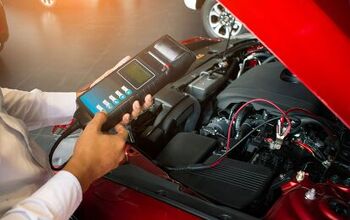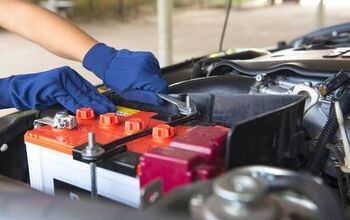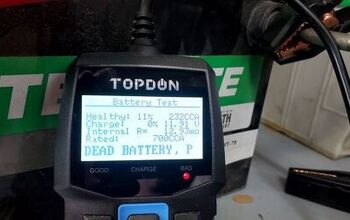How to Change a Car Battery

Your car’s battery is what makes everything in your car go. From your ignition to your radio, if you have a bad battery, none of them will work properly. A car battery, even the best one, won’t last forever. Five to seven years is the typical lifespan of a high-quality battery, less in areas of extreme heat and cold. When it’s time for a new one, you can change your car battery yourself. Here’s how to do it.
Where is your car's battery?
First, find out where your battery is. Yes, they're usually under the hood, but some vehicles put them in the trunk or under the seats. Some even put them in a place under the hood where you'd never find them by just looking around. The location is in your owner's manual, but a service manual for your vehicle is the best way to find out exactly where it is, especially if the battery is in a hard-to-reach position.
Getting to your battery
A factory service manual will tell you where the battery is, but, more importantly, it will tell you how to get to it. Invaluable for vehicles where the battery is under a seat or hidden away in a wheel well liner, and yes, that is a real place batteries can sometimes be hidden.
If the battery is hidden under some plastic covers or trim parts, a trim removal tool is the best way to remove those delicate parts without breaking anything. Especially important since there's a good chance your battery died in the cold and plastic parts are easier to break when they're frozen.
Protect yourself
A leaking battery is dangerous. They are filled with sulphuric acid which can burn you and the car parts around them. Baking soda sprinkled on any wet spots around the battery can neutralize the acid. Rubber gloves can protect your hands and can also give you some insulation against accidentally shocking yourself with the battery.
Other tools
Your car battery is probably held down by a small bracket. You'll need a small socket, usually a deep well socket, to remove the nut holding the bracket in place. A socket extension will come in handy as well.
And more tools
Once you've removed the bracket, it's time to disconnect the battery. A battery terminal wrench is the best way to disconnect the battery. They're thin wrenches to fit into small spots, and a good one will have a ratchet mechanism so you can quickly spin off the nut or bolt instead of removing and repositioning the wrench every time. If you have room, a standard socket or combination wrench will work. Disconnect the negative terminal, the one that's marked with a "-" and is usually covered in black plastic, first. Then remove the positive red terminal. You should now be able to lift the battery out of the car.
Carrying your battery
Some car batteries will have a handle, but if yours doesn't, a battery carrier tool makes it easier to pick up and move your car battery. Remember that these are full of acid and lead and can easily weigh 40 lbs or more. Even a small battery is heavier than it looks.
Cleaning
Now that the battery is out, take a look at the tray where the battery sits. See any green fuzzies? That's corrosion, and it needs to be removed. Your battery tray can also be rusty, especially if the old one was leaking. Use some baking soda to neutralize the acid and then a wire brush to remove any corrosion. If there is rust, a wire brush followed by some rust-blocking paint should keep the corrosion from getting worse and rotting out your battery tray.
Before you install your new battery
Before you install the new battery, use a battery terminal cleaner to make sure that the connections are clean. A corroded connection will give you poor performance even with a new battery. To help prevent future corrosion, battery terminal grease is a dielectric grease (meaning it will conduct electricity) that can protect the connection from th elements. It's not a must-apply, but it can be handy.
Installing your new battery
Assembly is the reverse of disassembly. Put the new battery in its place and re-attach the battery connections. This time connect the red positive terminal first, the black negative second. Before you put the terminals on the battery, remove the plastic caps that cover the battery posts to protect them in shipping. The posts should be silvery grey. If they're red or black, take the plastic cover off.
Attach the battery hold-down bracket, replace any trim pieces or other parts you've removed, and you should be done. Put your tools away and if your new battery had protective caps put them on your old battery. Take your old battery back to the store or to your local depot, as car batteries are filled with hazardous materials. They also can and should be recycled to make new batteries. If you live in an area that doesn't have a deposit system, try your local metal recycler and you'll likely get a few dollars for the dead battery.
Now you're done. Start the vehicle to make sure everything is working (if nothing happens, go back to the plastic cover step), reset your radio clock and pre-sets, and you're ready to go for a drive.
Feature Photo by By Tatiana Gekman/Shutterstock
We are committed to finding, researching, and recommending the best products. We earn commissions from purchases you make using the retail links in our product reviews. Learn more about how this works.

Aaron is a freelance writer, videographer and car enthusiast based out of the Detroit area. He has a special affinity for the Porsche 944 series, and once owned a Volvo 240 sedan with a Weber carb in place of the factory EFI system. His work has appeared on AutoGuide, GM Authority, /Drive, and VW Vortex, among other sites.
More by Aaron Brzozowski








































Comments
Join the conversation